When despair for the world grows in me
and I wake in the night at the least sound
in fear of what my life and my children’s lives may be,
I go and lie down where the wood drake
rests in his beauty on the water, and the great heron feeds.
I come into the peace of wild things
who do not tax their lives with forethought
of grief. I come into the presence of still water.
And I feel above me the day-blind stars
waiting with their light. For a time
I rest in the grace of the world, and am free.
Wendell Berry
Changes to Localising Leanganook activities and e-newsletter
The editing group of Localising Leanganook has recently decided to make three changes:
- First, a return to initiating community conversations in collaboration with other groups. Localising Leanganook community conversations commenced after the Local Lives Global Matters Conference held in Castlemaine almost 10 year s ago, in October 2015, as a way of keeping the conference momentum going. However, during the covid and lockdown periods these conversations ceased. It’s time to reinstate them and we welcome your suggestions.
- Second, our monthly e-newsletter will focus on a feature article, exploring localisation in greater depth in our our region as well as innovations which challenge existing paradigms, showcase creative and sustainable local initiatives, and which incubate ideas and strategies to strengthen our community connection and resilience.
- Third, instead of the detailed ‘whats on and local groups’ sections under the various headings, we are, instead, updating our Localising Leanganook website to incorporate tabs for each of the headings. A brief description and image for each group and event will be included under the tabs with links to websites and/or Facebook pages, so readers can find further information and updates. This will make the newsletter shorter. Please note that this is a work in progress so it will take time and will require some constant updating. We welcome your input around suitable group and event descriptions plus images. Contact us via hello@leanganook.org
Feature Article: The Los Angeles fires: climate emergency, public policy and community preparedness failures – by David Holmgren
- Arts and Culture
- Food Growing, Farming and Food Security
- Ecology and Environment
- First Nations
- Sustainable Living Resources
- Building Community
- The Spirit and the Sacred
- Local Government News
- Workshops and Courses
- Letters
- Food for Thought
Feature Article- The Los Angeles Fires: climate emergency, public policy and community preparedness failures – David Holmgren
Arts and Culture
THE SPACE BETWEEN- AN AFTERNOON OF LUTE MUSIC AT YANDOIT CULTURAL
When and Where: Sunday April 6th, at 3.00pm, at Yandoit Cultural– the old church in the bush, Uniting Church Rd, off High St, Yandoit

Rosemary Hodgson, one of Australia’s finest lute players, presents a magical afternoon of lute music in the excellent acoustics of Yandoit Cultural. The lute, an instrument of quiet contemplation, explores both sound and silence in this charming program. The concert will feature works by Philip Rosseter, Robert Johnson and John Dowland. Rosemary will be playing a 16th century lute for some of these pieces.
Australian lutenist, Rosemary Hodgson maintains a vibrant career as soloist and chamber musician. She has established an international reputation for outstanding concert presentations and solo lute recordings of captivating subtlety. A graduate of Melbourne University studying with John Griffiths, Rosemary completed her post graduate studies at the Royal College of Music London, with Jakob Lindberg. With a strong passion for music education, in 2019, Rosemary curated the inaugural Four Winds Lute School in Bermagui NSW, and in 2024 launched the Melbourne international Lute Festival in her hometown. She is a founding member of world-renowned period instrument ensemble La Compania & teaches lute at the University of Melbourne, Conservatorium of Music.
Cost: Suggested donation- $20/15 Bookings: https://yandoitcultural.org/bookings/
Cresfest- coming up this weekend

CresFest is about the joy of live music – playing it, hearing it, watching it, dancing to it, learning it and being inspired by it – it all happens in a lovely heritage town in central Victorian , harnessing the special warmth of our community of Creswick, just 15 minutes from Ballarat.
With our fourth CresFest in April 2025, audiences will enjoy three days of dance and music from a huge and diverse range of performers, from international stars to local newcomers will entertain you over the weekend of Friday 4 April – Sunday 6 April. With up to 18 small venues running at once, you’re guaranteed to get up close and personal with some amazing acts.
For more information and to book: https://cresfest.com.au/
Castlemaine Fringe Festival

There’s still lots happening up until April 6th- music, performances, open studios and much more. Check out the program: https://www.castlemainefringe.org.au/
Ilka White Upcoming Classes- Braided Rag Rugs and Intro to Band Weaving
FOR DESCRIPTIONS OF ILKA’S WORKSHOPS AND COURSES SEE HERE
TO EXPRESS INTEREST IN A PARTICULAR CLASS, MAKE CONTACT HERE OR JOIN ILKA’S MAILING LIST- https://www.ilkawhite.com.au/subscribe-1
Braided Rag Rugs – Online
Session 1- Saturday April 5th– – Introduction and braiding basics
Session 2 – Sunday April 6th – Further design possibilities, tricky bits and rug finishing
Learn a great way to recycle your old clothes and make fantastic rag rugs using an off-loom, spiral-woven braiding technique. We share an inspiring range of colour and design possibilities in this two day workshop. Beautiful and unique floor coverings are possible using contrasting colours, or you can blend patterned rags for a ‘carpet of flowers’. This braiding technique weaves in as we go so there is no stitching up required afterward. Bring your own material to recycle and find out what riches can come from rags… Cost : $125 (AUD) BOOK HERE
INTRODUCTION TO BAND WEAVING: INKLE LOOM WEEKEND IN CASTLEMAINE
and
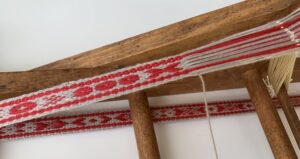
Designed for beginners and those looking to expand their textile skills, you’ll learn the ins and outs of the versatile Inkle loom. Over the course of two days, we will: Cover the basics of Inkle loom setup and operation; Explore Inkle design and colour theory for eye-catching results; Learn to draft and follow an Inkle pattern; Practice Inkle weaving techniques to create colourful, sturdy bands; Complete a woven band of your own design.
Join Ilka for a weekend of creativity and textile tradition. You’ll leave with new skills, a handwoven band, and the confidence to continue your Inkle weaving journey at home. No prior experience necessary. All materials and use of Inkle looms provided. Space is limited, so reserve your spot today!
Price: $195 To Register: https://ilka-white.corsizio.com/event/677b36eb99d74784f7b019c8
Radius Arts

Exhibitions, workshops, films, yoga , music and more in Hepburn Springs.
An immersive series of photography by David Rosendale, created in DjaDja Wurrung country, Hepburn Regional Park & the Wombat State Forest. This spell binding series was created emerging out of the global pandemic. Closes April 12th.
Where: 76 Main Road, Hepburn Springs . Ph: +61 3 5348 1199 email- radius@designscope.com.au
Newstead Arts Hub

Sunday 6 April. 10am-3pm. Cornucopia workshop with Elizabeth Woodroofe.
Rudderless Exhibition. 5-13 April (2 weeks only). Weekends 10am-4pm.
Every Wednesday Art Hang. 11am-2pm. Free for all. Spend time in the company of other artists BYO art to work on
For more information about exhibitions and events: https://newsteadartshub.org/
Food Growing, Farming and Food Security
Hepburn Wholefoods
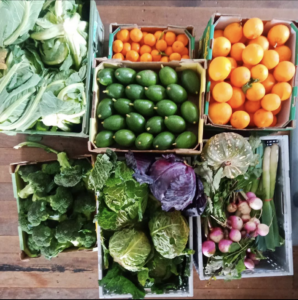
The weather is cooling, the leaves are turning and the days are getting shorter, autumn is upon us. Warm weather produce is still around for a little bit longer but they will be finishing up soon so enjoy them while they’re here. It’s a great time to be preserving these fruit and veggies to enjoy through the cooler months.
We are urgently looking for volunteers to assist with unpacking and displaying fresh produce and discounted produce on Thursdays, this could be every week, or every second week. We are hoping for 2 or 3 volunteers to help spread the work load. We anticipate this will take about 2 hours, perhaps less, before we open for our shift at 3pm. This will be counted as part of your volunteering contribution.You will be helping Wholefoods to maintain our wonderful produce offering, and keeping all our members happy! Training and support will be available throughout the role. If you are interested, please contact members@hepburnwholefoods.org.au
Opening hours: Mondays 9.30-11.30am; Thursdays 3-5pm; Saturdays 11am-2.30pm
Location: 11 Perrins Street · Daylesford, Vic 3460 ·
Find us here, and yes, you can join or renew your membership at the shop! Membership: $40 per year, $20 per year concession, FREE for volunteers. Website
Harcourt Orchard Keepers

Mixed Box: Apples and Pears
Grade: 1st, Size: 5kg box, REGULAR PRICE: $48, SPECIAL PRICE: $42
Containing over $48 value, this week’s special box contains 2 apples and 2 pears from our farm. All fruit will keep very well (for weeks) in the fridge, or ripen over a few days in the fruit bowl. Gala apples – very crunchy and nice and sweet, keep well, fruit has some surface spots but this doesn’t affect the quality of the fruit. Cox apples – small (perfect for lunch boxes), very sweet and crunchy, delicious floral flavour. Williams pears – just starting to go yellow, will become soft and juicy when ripe; Ya Li Nashi pears – juicy and crunchy, like a cross between an apple and a pear.
Gala Apples: Grade: 2nd, Size: 10kg box, REGULAR PRICE: $60, SPECIAL PRICE: $50
Our Certified Organic Gala apples are sweet and crisp. They stay firm and crunchy in the fridge for up to two months. Gala are usually a mix of sizes from large to small, the smaller fruit being a popular choice for lunchboxes. Second-grade fruit mostly have skin blemishes from a fungal disease called black spot. This is a cosmetic problem only! The spots are safe to eat and easily removed with peeling. Seconds may also be paler or have less coloured skin, but are still sweet, crunchy, and delicious. Gala are delicious eaten fresh, and are also good for tarts etc. as they tend to hold their shape when cooked (as opposed to cooking apples like Bramley which go very fluffy when cooked)
͏ ͏ ͏ ͏ ͏ ͏ ͏ ͏ ͏ ͏ ͏ ͏ ͏ ͏
Mt Franklin Organics
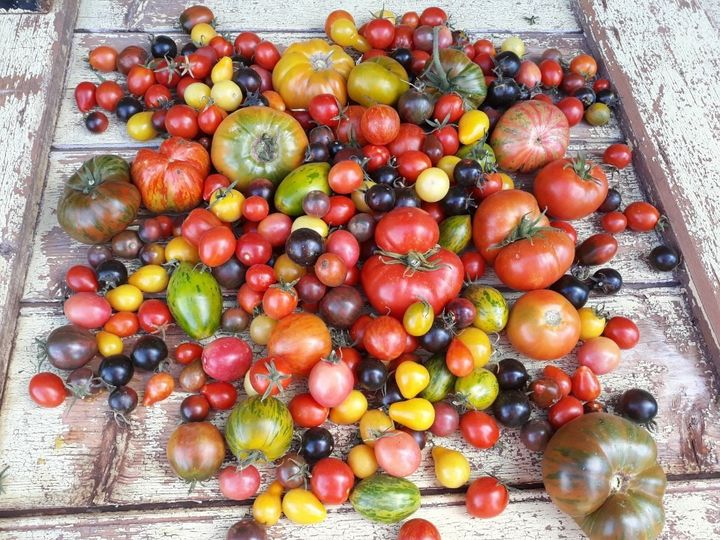
Edgy Veg Award
TASTE INSPIRED DISHES FROM 46 PUBS, CAFES & RESTAURANTS ACROSS 12 VILLAGES IN CENTRAL VICTORIA

Ecology and Environment
BARRY GOLDING SHARES STORIES ABOUT HIS BOOK: SIX PEAKS SPEAK
When and Where: Saturday April 26th, at 4.00pm, at Yandoit Cultural– the old church in the bush, Uniting Church Rd, off High St, Yandoit

Kingston resident and author, Barry Golding, will share stories about his compelling journey in southern Dja Dja Wurrung Country through the eyes of six iconic mountains in central Victoria. The featured mountains are today called Mt Kooroocheang [near Smeaton], Mt Beckworth [near Clunes], Mt Greenock [near Talbot], Mt Tarrengower [near Maldon], Mt Alexander [near Castlemaine] and Mt Franklin [near Daylesford]. Six Peaks Speak is an interdisciplinary and intercultural story across time, cultures, contested histories and unsettled relationships, uniquely traversing First Nations and unsettler, history, geology, ecology, anthropology and reserve management.
Barry will focus on some of the lesser known legacies in his book associated with Lalkambuk /Mt Franklin in our local area, with reference also to Gurutjanga / Mt Kooroocheang and Liyanganuk /Mt Alexander’ .
Rodney Carter, Dja Dja Wurrung Chief Executive Officer, says of the book: ‘The deep and painstaking research undertaken to bring this book together is significant and impressive. The narrative style, interweaving history of the locations with geology make this book unique, quite beautiful and accessible to a broader audience. It involves a discussion about deeply unsettling legacies, highly relevant today in Australia. It is indeed powerful and disquieting at the same time.’
Cost: Suggested donation- $10.00/8.00. Bookings: https://yandoitcultural.org/bookings/
Renewable Newstead- Solar Farm Open Day
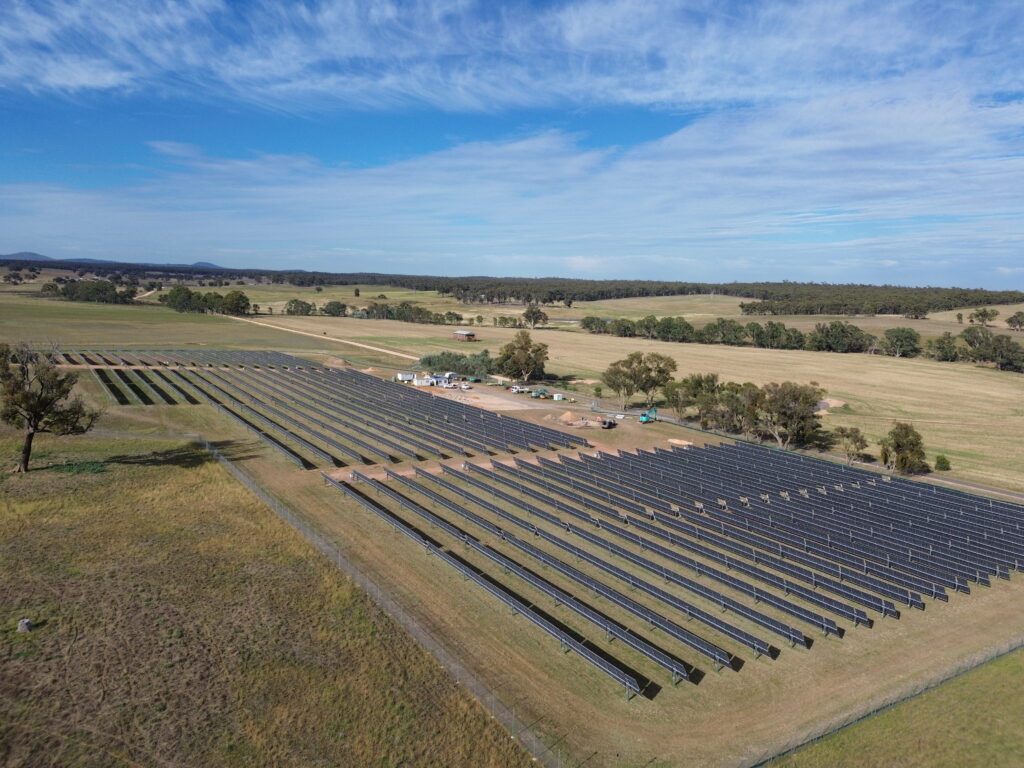
Newstead’s Solar Farm Open Day on Friday 4th April, anytime between 11:00am to 3:00pm. This event is a wonderful opportunity for everyone to explore our innovative solar farm and learn about renewable energy sources. Flow Power, who owns and operates the facility, will have representatives on site to supervise visitors and explain the farm’s features.
Location: Captain’s Gully Road. Head out of Newstead towards Maryborough. Turn left onto Captain’s Gully Road which is approximately 3.8kms from the supermarket. Drive down Captain’s Gully Road for 1.1kms and the farm will be on your left.
- Guided tour of the solar farm
- Insightful presentations on solar energy
- Interactive sessions with energy experts
- Opportunities to ask questions and discuss renewable energy
RSVP: Please confirm your attendance by sending an email by Wednesday 2nd April to info@renewablenewstead.com.au with YES FARM in the subject line. We look forward to having you join us for an informative and enjoyable experience.
Flow Power – Sign Up Information & Help: 2-5pm, Friday 4th April @ Newstead Rural Transaction Centre
Are you considering signing up with Flow Power? We have discovered that Flow Power’s retail offer is not only competitive but often more attractive than other market offers available to local households. Meet the Flow Power Team- These experts will review your current electricity bill with you to determine if Flow Power’s pricing and deals are more beneficial than your existing arrangement. This opportunity is open to both households and local businesses. All are welcome!
We encourage everyone interested in sustainable living, buying from the solar farm or renewable energy to attend this event. Whether you’re an enthusiast or simply curious about Newstead’s very own solar farm, this open day is for you.Come and be part of a greener future. Bring Your Power Bills and Questions . We encourage you to bring your recent power bills and any questions you may have. The Flow Power team will be on hand to assist you and guide you through the process. If you decide to switch to Flow Power after these discussions, ensure you have your phone and email login details with you, as the Flow Power team will help you sign up on the spot
Local Community Benefit: Those who switch to Flow Power can choose to nominate a local club or organisation to receive up to $200, or they can keep $100 for themselves and allocate the other $100 to a Newstead community organisation of their choice. This generous initiative, funded by Renewable Newstead, is known as the Local Community Benefit program. How to Claim the Local Community Benefit- To be eligible for the Local Community Benefit, use the code 30-20 when you sign up for electricity from Flow Power. This code will link your account with the Newstead Solar Farm. After receiving your first FlowPower electricity bill, scan and email it to info@renewablenewstead.com.au with “LCB Claim” in the subject line. You can find more details about the Local Community Benefit on the Renewable Newstead website
RSVP: Please confirm your attendance by sending an email by Wednesday, 2nd April, to info@renewablenewstead.com.au with YES RTC in the subject line.
Bird of the month- Brown Thornbill
The Brown Thornbill is one of the typical “little brown birds” that are always moving fast in foliage and thus hard to identify. It is the only Thornbill species found locally with a red eye, which is a helpful distinguishing feature to look out for, though tough to see in certain light conditions.
Brown Thornbill with its distinctive red eye. Photo by Damian Kelly
Published by Connecting Country: https://connectingcountry.org.au/
The Brown Thornbill can be found in a wide variety of habitats along the east coast of Australia from northern Queensland around to South Australia as well as Tasmania. This adaptable species occurs in a range of habitats with a dense shrub layer, including wet and dry eucalypt forests, as well as heathlands and rainforests. Brown Thornbills have been recorded as high as 1200m in Victoria down to coastal areas. They can also be found in suburban gardens – in fact as I type this I am watching one have a good splash in a water bowl near my window.
A predominantly insectivorous species, it gleans most of its food from foliage and tree trunks as well as foraging on the ground. Occasionally it has been observed eating seeds, fruit and nuts when available.
Long term banding studies have shown that adults are predominantly sedentary although some movements occur from high zones to lower areas in winter. Young birds, however, do disperse to new areas when full fledged. Unlike some Australian species, Brown Thornbills do not have helpers at the nest and broods are raised by the pair. Nesting can occur from June to January, depending on the season and nests are built quite low down in dense shrubbery or even in grass tussocks. Nests are rounded, oval and domed with an entrance near the top. Materials include grasses, lichen, moss, and wool if available, bound together with spider web. Males and females appear very similar and juveniles are equally hard to separate from their parents once fully fledged.
Yimby Composting

We are looking for new composters particularly in Campbell’s Creek and North Castlemaine between Templeton St and Bull St. If you are interested please register here and come along to our YIMBY info session
Become a YIMBY bucket angel: Our composters work so hard collecting, composting and cleaning their buckets so they are ready to go for the next week’s collection. We would love to have some Bucket Angels to offer respite from the bucket washing when our composters are in need. The buckets would already be thoroughly rinsed and would just need a final soapy wash, dry and newspaper lining.
Weekly coffee pick up from Tog’s and Castlemaine Fresh
Bucket collector from the Baco. We collect about 80 honey buckets every fortnight from the the bacon factory. We would love some help with this collection, it would require a biggish vehicle or ute and the buckets then get stored in the shed at the Hub garden.
Donations of second-hand shade cloth so we can make more Beckley Bays (ideally 1800mm width and at least 3600mm in length)
Please get in touch with the YIMBY team if you can help. hello@yimbycompost.com
Biolinks- Become a Citizen Scientist in 2025
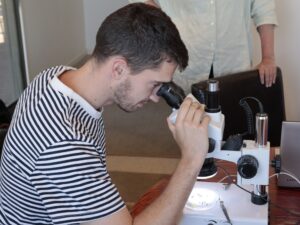
From nest box monitoring to nocturnal spotlighting and reptile surveys.
We have ample opportunities to do this throughout 2025 as we continue our monitoring program post the works undertaken in 2023 at our Spring Plains Watershed Repair Pilot Project.
People of all ages have an opportunity to participate in the program and the dates are set to accommodate school holidays. Your involvement helps us to understand what impact our work is having on ecosystems and enables us to refine this process.
Natural Newstead- Hawk Owls

Powerful Owls and Barking Owls (both hawk-owls) roost in similar types of locations, almost always amongst the dark foliage of trees such as Blackwood and Black Wattle.
Our other local hawk-owl, the Southern Boobook, is a common local resident. Their distinctive hawkish profile, a feature of Ninox owls, lacks the well developed facial disks of species such as the Barn Owl (see here for a comparison). This feature is used to direct sound to the ears and as a result Ninox owls are less well adapted to hunting in total darkness. They are regarded as mainly crepuscular hunters with most activity around dusk and dawn hours.
https://geoffpark.wordpress.com/
Wombat Forest Care

Landcare Magazine

The Summer 2024/25 edition of the Victorian Landcare & Catchment Management magazine has now been published! You can read Issue 89 online or download it in PDF format today.
This issue is a feature on innovative farming, including stories about:
Warrenbayne Boho Land Protection Group’s Whole Farm Planning workshops, where the group brings in experts to educate landholders on soils, sustainable farming, natural capital accounting, protecting waterways, remnant vegetation and biosecurity issues.
Biodynamic and integrated farming on Andy Marshall and Linda Scott’s property at Geragamete, where they have implemented farming systems that complement and support nature. This approach maximises biodiversity, provides significant income and offers the potential to connect with nature.
Equine landcare groups coming together to share knowledge and support eachother through the Victorian Equine Landcare Community of Practice, helping horse owners increase their land management skills and minimise common issues like erosion and pasture degradation.
North Central Catchment Management Authority

April edition of the North Central Chat
https://www.nccma.vic.gov.au/documents/1623/North_Central_Chat_April_2025.pdf
First Nations
DjaDjaWurrung Wurreka Newsletter
The Wurreka Newsletter, published on March 12th includes articles on:

- Healing and honouring the Guildford Big Tree, one year on
- Lalgambuk & Djaara’s Connection to Country on the path to World Heritage Listing
- Treaty Negotiations Begin
- “Our Companion”: Listen to Rodney Carter yarning about protecting gal gal (dingo)
- Discover Galkangu: Building with Djaara
https://mailchi.mp/djadjawurrung/wurreka-newsletter
Sustainable Living Resources
Repair Cafes
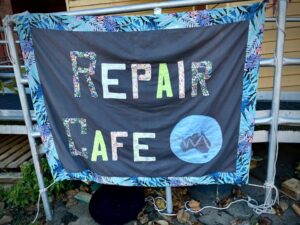
Repair Cafes are a wonderful volunteer-led initiative for enabling community members to fix everyday household items such as clothing and electrical goods and reducing waste. Below are the upcoming dates in April for the Repair Cafes in our region.
Castlemaine: Sunday 27th April, 10am – 1pm, Castlemaine Community House
Daylesford: Easter Sunday so no cafe this month
Creswick: Sunday 16th March, Easter Sunday 1 – 4pm, Creswick Community Centre Hall
Ballarat: Saturday 26th April, 1 – 4pm, Barkly Square
Bendigo: Every Thursday and Saturday, 10am – 1pm
Pedestrian and cycling works in McKenzie Hill

Mt Alexander shire has received more than $3 million in funding from the Federal Government, along with our own $750,000 contribution, to design and construct a new shared cycling and pedestrian pathway in McKenzie Hill. The new pathway will link McKenzie Hill to Castlemaine, and stretch for 3.6 kilometres along Ireland Street, McKenzie Hill to Parker Street, Castlemaine via the Castlemaine Railway Station.
When completed, the new shared pathway will improve accessibility and encourage more people to walk and cycle safely.
New Economy Network (NENA)- 2025 Conference
SUBMIT YOUR PROPOSAL AND JOIN US IN OCTOBER. The New Economy Network Australia (NENA) invites proposals for our 2025 conference, which will bring together practitioners, academics, policymakers, and activists to explore how ancient wisdom and innovative economic approaches can create thriving, sustainable, and inclusive societies.

The conference will be held at the Broadbeach Cultural Centre on the Gold Coast (Queensland), Friday 10th to Sunday 12th October 2025.
We welcome submissions across diverse formats, including practitioner presentations, academic research paper presentations, panel discussions, workshops, and experiential activities. Please submit your contact details, abstract, photo and bio via our ONLINE FORM HERE Please also indicate what type of conference activity you’d like to provide, and which conference theme your proposal connects to.
CONFERENCE THEMES: Indigenous Economies: Conference proposals are invited that share insights from ancient and contemporary Indigenous approaches to economic governance, including Caring for Country and Caring for Kin, and decolonizing economic systems. Bioregioning, Resilience and Place-based Economies: Proposals are invited that share frameworks, stories and case studies about innovative approaches to how we live, work and play in our local and bioregional places. This theme includes responding to climate change, rethinking energy, housing, food, land use and relationships with the non-human world.Rethinking ‘Wealth’ – Challenging Capitalism and Redefining the Good Life: Proposals are invited that explore alternative economic models, theories, and case studies that redefine wealth and prosperity; including managing the commons and strategies for redistribution and pre-distribution of shared ‘wealth’.Governance for the Common Good: Proposals are invited that foster discussion about policies and governance structures – at all scales of government, business and society – that support social & economic justice and environmental health.Movement Building from the Ground Up: Proposals are invited that explore approaches to movement building for new economies, through grassroots action and initiatives driving systemic change.Values in Action: Proposals are invited that examine the ethics and philosophies of new economies, including the ethical, ontological, and epistemological foundations of new economic systems.
MORE INFORMATION: Questions? please get in touch at nena@neweconomy.org.au
͏Creswick Trails ͏

Creswick Trails are world-class mountain bike trails that riders from across Victoria – and even other parts of Australia – are enjoying!
Check out the official website or follow Djuwang Baring on Instagram
͏ ͏ ͏ ͏ ͏ ͏ ͏ ͏
Grounded- Making affordable housing a reality before The Australian Dream becomes an urban myth

Community Land Trusts Report Launch – Wednesday 2 April, 6:30PM. Spots are filling fast! Reserve your seat and find out more about why CLTs are a smarter housing alternative – REGISTER FOR THE PUBLIC LAUNCH
Can’t make it in person? Make sure you secure your livestream ticket- REGISTER FOR THE LIVESTREAM
We’re just days away from unveiling Grounded in Affordability: The Economic Case for Community Land Trusts
As we head into another election, the cost-of-living increasingly dominates voter concerns with housing policies in the spotlight. At Grounded we are determined to break the housing cycle by flipping the script on treating housing like a stock market for property investors. We want to work with YOU on changing these policies that have been fueling inequality, speculation, and sky-high rents across the country.
Building Community
Castlemaine Free University
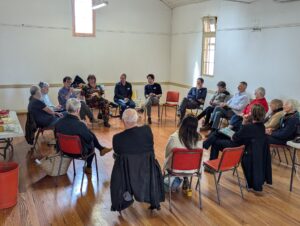
Degrowth Central Victoria

Kirsten Moegerlein who created this image (above) for the Mount Alexander Shire Eco Art Truck project. Check out what she has to say about the image here: https://www.instagram.com/reel/DGwQwZ8zJz1/
The Hub – Castlemaine Community Cooperative
We are excited to report that everything is in place for the Co-operative to try and buy the Hub on the corner of Barker and Templeton Streets in Castlemaine. The current owner wants to sell to us and a price has been negotiated. This is now our target. To buy the Hub, the Co-operative will borrow money from members (using a mechanism called debentures). Member-investors will be able to choose between 0% and 4% p.a. interest on funds they contribute for a 5, 10 or 15 year term. At the end of this term, their original amount will be paid back.
Our business plan, a disclosure statement, and summary offer has been sent off to Consumer Affairs Victoria and will be provided to you as soon as it is approved. All members, regardless of investment, will get a vote on the future of the Hub, and investment of any additional surplus generated by the Hub.
We have 15 weeks to seal the deal and WE NEED YOUR HELP! In April we will launch a campaign to build our membership locally ahead of us opening our capital raise (in June). We will kick-off by letter-boxing the whole town. Let us know if you can help letterbox the streets in your area. Even an hour of your time will help. Stay tuned for more details on our local campaign activities.
Maldon Walk
Maldon’s Government Reserve: More than a Camp for Cops and Crooks. Come walk with us – who knows who you will meet along the way?

As part of the National Trust Australian Heritage Festival, the Maldon Heritage Network, in partnership with the Maldon Neighbourhood Centre, invites you to step back in time and take a walk through the former Maldon government reserve and police camp to imagine the hurly burly of the goldfields and beyond. Established as the Police Commissioner’s camp by 1854, the area housed the first government buildings of Maldon, a township surveyed on the Tarrangower diggings in the same year. In February 1854 the camp at Tarrangower was described as ‘miserable’.
As quartz reefs were tapped and mined for gold, a more permanent population settled at Maldon and conditions slowly improved at the camp, with many of the early government buildings remaining in evidence today. On this walk through history a host of characters will tell you tall tales and true about the places on site that evidence the life and times of Maldon from the 1850s to the 1960s.
Place: Meet at the Maldon Post Office, 95 High Street, Maldon.
Times: Sunday 27 April 2025, 2:00pm-4:00pm and Sunday 18 May 2025, 11:00am-1:00pm (repeat walk).
This walk is free but prebooking is required at info@maldonnc.org.au or phone 03 5475 2093.
Please note that each walk is approximately two kilometres long and will take about two hours. Some seating is available along the way. The route of the walks includes some unmade paths and uneven ground.
Local Futures Webinars

Already underway, our Feminine Futures Webinar series will run fortnightly until the end of April.
We invite you to listen to the wisdom and inspiration of seven extraordinary women. Their broad set of expertise – spiritual, psychological, ecological, and economic – helps us reassess our worldviews from a feminine, living-world perspective.
Upcoming youth events in Hepburn Shire
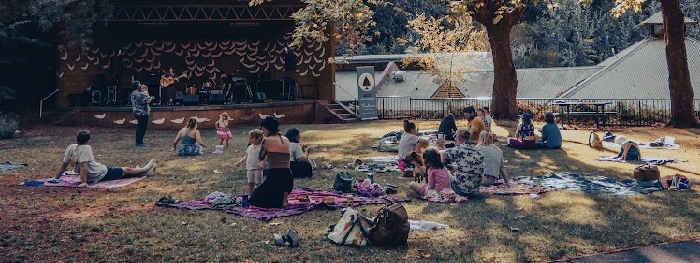
The next youth initiative is our Bandstands Music Pop Ups across the Easter school holidays. We will be hosting events from 4 pm and 5 pm on:
- Friday 4 April in Trentham with special guest Eloise
- Friday 11April in Clunes with special guests Stevie Rigby and Arlo Autumnus
- Friday 25 April in Creswick with special guests the Creswick Youth Choir
Come support your local artists, keep an eye on the Hepburn Families Facebook page for more information.
The Spirit and the Sacred
Yandoit Sacred
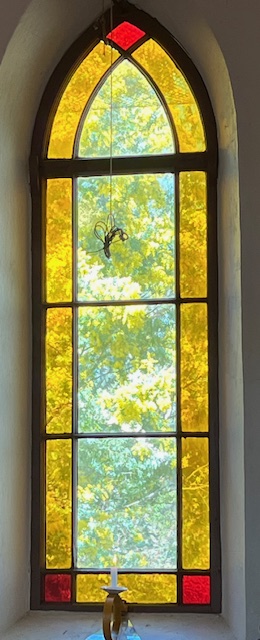
When and Where: Next Yandoit Sacred Gathering- Friday April 4th at 5.30pm at Yandoit Uniting Church , Uniting Church Rd, off High St, Yandoit
We will then share our thoughts/feelings/experiences on what the word ‘sacred’ means for each of us. We will close with suggestions for the following Yandoit Sacred session, followed by home-made soup around the kitchen table for any who may want to eat together afterwards. You are invited to bring an ‘offering’ – something you might be doing, reading, thinking about, something physical you are making or something symbolic, that could be brought into the circle to be shared and/or blessed.
Local Government News
Where: Maine Foodstore, 290-292 Barker Street, Castlemaine VIC, Australia
Mt Alexander Council plans- Our Shire, Our Future 2025-2029

What matters to you? Get involved and help guide what we do and how we do it over the next four years.
Share your feedback before 22 April.
Have your say starts on Daylesford Community Facilities
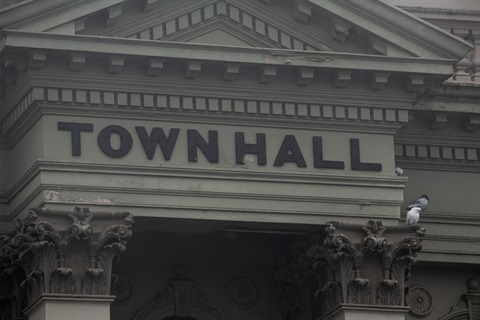
The community engagement period for the Daylesford Community Facilities project has started. The project is investigating the potential of a community hub at Daylesford Town Hall, which will include a library, customer experience hub and multipurpose community facilities.
Review engagement materials and provide your feedback before Sunday 13 April.
How can you have your say? Visit the project page on the Participate Hepburn website to view floorplans, artistic images and complete the community feedback survey.
- Attend one of the drop-in sessions to discuss the project with Council Officers and members of the Project Advisory Group.
Hard copies of the designs can be printed on request at the Daylesford Library or the Daylesford Customer Experience Hub at Duke Street. Have your say
Statement on Hepburn Hub at The Rex

The Mayor, Cr Don Henderson, this week issued a statement expressing regret to our community in relation to the Hepburn Hub at The Rex.
This follows a media release published last week regarding the unauthorised release of the Local Government Inspectorate draft report on the Hepburn Hub at The Rex project.
Workshops and Courses
Letters
Letters welcomed : send to hello@leanganook.org
Food for Thought͏ ͏ ͏ ͏ ͏ ͏ ͏ ͏ ͏ ͏ ͏ ͏ ͏ ͏ ͏ ͏ ͏ ͏ ͏ ͏
This conversation — with my colleague Danny Almagor — was one of my favourites of recent years. Why? Because we — collectively — are integrating and honing in on the merger of the biophysical macro and the inner work micro, with respect to the stakes of our time.”
Listen below: This powerful exchange between two visionary thinkers offers a unique perspective on how we might navigate our most complex global challenges—you don’t want to miss it.
Emergence Magazine- An Essay- the Fault of Time
https://emergencemagazine.org/essay/the-fault-of-time/?utm_source=Emergence+Magazine&utm_campaign
Practising Transition
Every first week of the month we hold a specific webinar on a Transition Practice with a guest. On the third Tuesday of each month there is a collective wisdom sharing space. We align the theme of the webinars and the sharing space each month. The webinars take the form of workshops led by individual facilitators, while the Collective Wisdom space functions as an open space where everyone can share their learnings and experiences, from their unique contexts. This space encourages discussion and connection with others in the wider Transition movement. These two spaces complement each other and each can be attended as a one-off event.
The Compost Conversation articles…
- Be a better composter in 2025
- Would you like chips with that?
- Does composting really reduce greenhouse emissions?
- Reminder: All previous Compost Conversation articles are available on our website in our Resource Hub.
Tyson Yunkaporta on THE TIME TRAVELER’S WIFE’S HUSBAND

![[ Random Image ]](https://leanganook.org/images/image_11.jpeg)
 Slide from Joan Webster’s presentation at a post Black Saturday event
Slide from Joan Webster’s presentation at a post Black Saturday event Slide from Joan Webster’s presentation at a post Black Saturday event
Slide from Joan Webster’s presentation at a post Black Saturday event Slide from Joan Webster’s presentation at a post Black Saturday event
Slide from Joan Webster’s presentation at a post Black Saturday event

